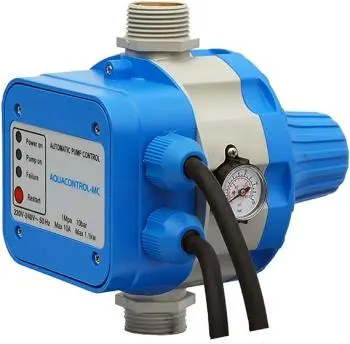
Pressure switches are essential devices in industrial systems that play a crucial role in regulating and controlling pressure in industrial systems involving liquids and gases.
These versatile instruments are critical components in a wide range of applications, from heating and cooling systems to industrial machinery and water pumping systems.
In this article, we will explore in detail what pressure switches are, how they work, and where they are used.
What is a Pressure Switch?
A pressure switch is a pressure switch used to monitor and control the pressure of a fluid in a system. Its main function is to activate or deactivate an electrical circuit or perform a specific action when the pressure reaches a predetermined value.
Pressure switches are essential to ensure the efficient and safe operation of a wide variety of engineering equipment and hydraulic systems.
Types and operation of a pressure switch
Pressure switches operate based on a simple but effective principle: the mechanical or electronic deformation of a sensor element when the pressure of the fluid exerts a force on it.
There are several types of pressure switches, but the most common include:
Diaphragm pressure switches
-
They use a flexible diaphragm as a sensing element.
-
When the pressure increases or decreases, the diaphragm deforms, which activates or deactivates the electrical contacts.
-
They are ideal for applications with relatively low or moderate pressures.
Piston pressure switches
-
They use a moving piston in a cylinder as a sensing element.
-
The piston moves in response to pressure changes, which, in turn, controls the electrical contacts.
-
They are suitable for applications that require high precision and pressure control.
Bourdon tube pressure switches
-
They use a Bourdon tube, which is a C-shaped tube, as the sensing element.
-
When pressure is applied to the tube, it tends to straighten, which activates the switching mechanism.
-
They are common in high pressure industrial applications.
Common Applications: What is it for?
Pressure switches are used in a wide variety of industrial and commercial applications:
Nuclear power plants
In a nuclear power plant, they are used for several critical applications, including:
-
Coolant control: they are used to monitor the pressure in the primary and secondary cooling circuits of the nuclear reactor. This is essential to ensure that the coolant flows at the proper pressure to cool the reactor and transfer the heat generated in the reactor core.
-
Safety control: they are an integral part of the safety systems in nuclear power plants. They are used to monitor pressure in containment systems and in accident mitigation systems. In the event of an emergency situation, such as an overpressure in the containment, the pressure switches can activate safety systems, such as pressure relief valves.
-
Steam control: In combined cycle nuclear power plants, which use a steam Rankine cycle to generate electricity, pressure switches monitor and control the steam pressure in the turbine cycle.
-
Water Flow Control – They are also used to monitor and control the flow of water in cooling systems, fire suppression systems, and other security-related systems.
Air conditioning and heating systems
Pressure switches are used to control refrigerant pressure in air conditioning and refrigeration systems, ensuring efficient operation.
Water pumping systems
In pumping applications, pressure switches regulate water pressure and can turn pumps on or off as needed.
Air compressors
Pressure switches are used to control pressure in air compressors, allowing air pressure to be kept within safe limits.
Safety in boilers and pressure vessels
Pressure switches serve as safety devices in boilers and pressure vessels, disconnecting the system in case the pressure exceeds critical levels.
Industrial process monitoring
In industry, pressure switches are used to control and maintain pressure in production systems, ensuring consistent product quality.
Importance of calibration and maintenance
The accuracy of pressure switches is essential for their effective operation and to ensure safety in many applications. Regular calibration and maintenance are critical to ensure that these devices perform within required specifications and tolerances.
Additionally, monitoring readings and adjusting set points as necessary are common practices in pressure switch management.